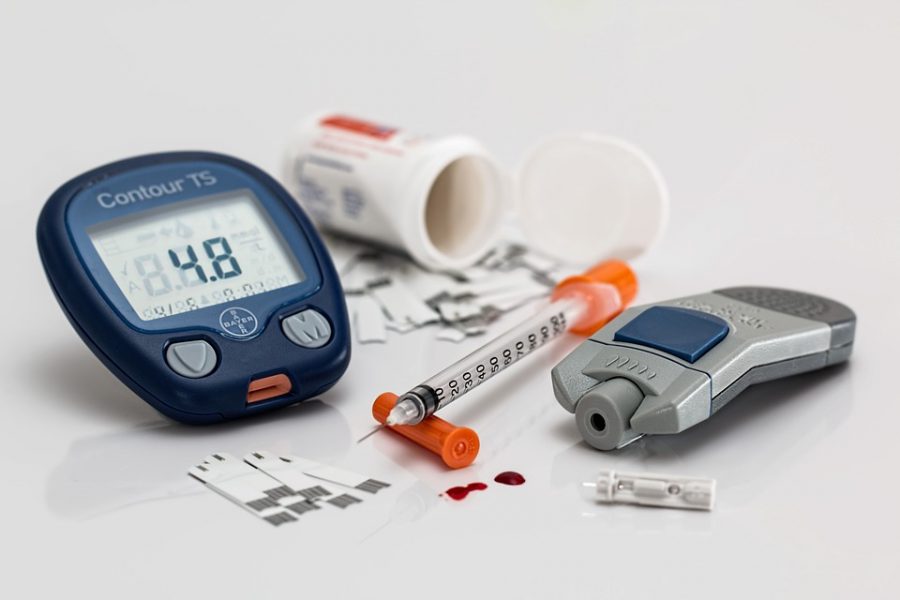“That was the hardest thing to adjust to at a young age,” she said. “Now, it’s just a part of my daily routine.”
Traylor, a junior majoring in food and nutrition and member of the student-led organization Diabetes Education Team, said people need to be more educated on the difference between Type 1 and Type 2 diabetes.
Type 1 diabetics take insulin injections after meals and throughout the day because their pancreas’ do not produce insulin. Type 2 diabetes is the type that can be associated with obesity and can still produce some insulin. They may be on injections, may take oral medication, or may control it with diet and exercise. This is not possible for type 1 diabetics, Traylor said.
“Many people only know of Type 2 diabetes, and a lot of people assume I have Type 1 from a poor diet,” she said. “This just is not true.”
She got involved in DiET her freshman year because of her disease. The club took it upon themselves to address the nation’s growing concern of diabetes. It not only educates surrounding communities on exercise and nutrition, but it also gives management advice to people already living with diabetes.
DiET began in 2011 in an effort to provide information about diabetes and health to people in underserved areas that would not otherwise receive it. They essentially try to save lives by educating students and community members alike. After two years in it, the nutrition education component is now Traylor’s favorite part of the club.
“People don’t realize that potatoes and fried okra aren’t healthy choices for vegetables,” she said. “They honestly believe that they have healthy diets.”
One in seven Alabamians have diabetes, according to the American Diabetes Association.
“This is the statistic that we are trying to change,” said Madilyn Tomaso, a graduate student in the Rural Medical Scholars Program and president of DiET. “But our purposes are more than combating a statistic.”
In addition to their work within the University, DiET also offers educational programs to Tuscaloosa County and other underserved communities such as Greene, Hale, Perry and Marengo Counties. Their program is based on teaching the following topics: Nutrition, exercise, diabetes management, living with stress, body care and doctor visits. DiET believes those six topics to be most effective in the prevention and management of diabetes.
“When I get to see them improve, it makes all of the work worth it. As obesity rates continue to increase, it is important that students learn to develop healthy habits now so that as they enter the workforce they will have established habits that will lead to a longer and healthier life,” Tomaso said.
Angela Hammond, Nurse Practitioner at the University Medical Center, said although the average age to develop diabetes is around 50-55, that age range is becoming younger. Many Americans are pre-diabetic and do not know it yet.
“About 50 percent of adults, and I would say that would probably be middle aged and above, are either pre-diabetic, diabetic or have some sort of insulin resistance,” Hammond said.
According to stateofobesity.org, Alabama has climbed up to the second highest obesity rate in the country. Obesity rates are rising with adolescents as the years go on, and the state’s obesity rate is now up to 35.6 percent. Heart disease cases in 2010 were at 311,842, and the projected number of heart disease cases in 2030 are 1,458,880.
She said the transition from high school to college is difficult for some students to maintain their health. Most students are not cooking for themselves, usually resulting in consuming foods higher in calories with additional fat, salt and sugar.
“I was looking in the snack machine and there was not a single snack in there that would be appropriate for a diabetic,” she said.
Hammond said being physically active is the easiest way to avoid the Freshman 15, along with eating at home and monitoring snack foods. While some students struggle with the Freshman 15, she said it is certainly reversible because you can spend a year eating bad but still get back into healthy habits.
“I’ve seen students in the past who gained all that weight the first year in school and they realize they need to do something about it, so they study and figure out what all they did the first year and try to reverse that,” she said. “They change their eating habits, visit the gym a little bit more and do a little more walking on campus.”
While obesity and Type 2 diabetes are commonly associated with each other, a study conducted on scienceordic.com claims there are three different subcategories of Type 2, some of which are patients who are average weight yet still have Type 2.
The first group consists of the “typical” course of Type 2 diabetes, while the other two groups include a possible congenital effect and a lack of insulin effectiveness. The website lists that further studies still need to be conducted and reviewed by other researchers.
To avoid developing Type 2 diabetes, maintaining a healthy weight and a BMI of under 25 for Caucasian and African Americans, or 20-22 for Asians in combination with regular exercise and not eating foods that are invented or processed is all imperative, Hammond said.









